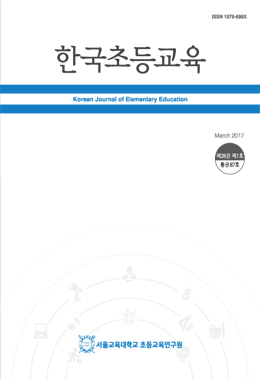본 연구는 다층분석(Multi-Level Analysis)을 사용하여 초등학교 3, 4, 5, 6학년에 재학중인 학생 1404명을 대상으로 지각된 인기도가 또래괴롭힘 피해에 어떠한 영향을 미치는지 살펴보고 학급의 지위 위계와 또래괴롭힘 피해 수준이 지각된 인기도와 또래괴롭힘 피해간의 관계를 조절하는지 살펴보았다. 지각된 인기도와 또래괴롭힘 피해는 또래지명을 통해 측정하였고, 학급의 지위위계는 지각된 인기도의 표준편차 그리고 학급의 또래괴롭힘 피해 수준은 또래괴롭힘 피해 수준의 학급평균으로 측정하였다. 분석 결과, 학생수준(1수준)에서는 지각된 인기도가 또래괴롭힘 피해에 유의한 영향을 미치고, 학급 수준(2수준)에서는 지위 위계와 또래괴롭힘 피해 수준이 또래괴롭힘 피해에 유의한 영향을 미치는 것으로 밝혀졌다. 또한 지각된 인기도와 또래괴롭힘 피해간의 관계에서 학급의 지위위계와 또래괴롭힘 피해 수준간 상호작용 효과가 나타났다. 이러한 결과는 낮은 수준의 학급의 지위 위계와 또래괴롭힘 피해 수준이 또래들로부터 인기가 없는 학생이 또래괴롭힘을 당하지 않도록 완충 작용을 한다는 것을 의미한다. 이러한 결과를 토대로 초등학생의 또래괴롭힘 피해를 줄일 수 있는 방안들과 후속 연구 항목을 제안하였다.
This study examined how perceived popularity influences peer victimization as well as the moderating effects of status hierarchy and peer victimization level on the relation between perceived popularity and peer victimization. In a sample of 1,404 elementary students (Grade 3-6), multi-level analyses were performed. Perceived popularity and peer victimization were measured using the peer nomination method. In addition, the standard deviation of perceived popularity was used to assess the class-level status hierarchy while class mean of individuals` peer victimization was used to measure the class-level peer victimization. The results showed that perceived popularity had a significant effect on peer victimization at the student level and also, the effect of status hierarchy and peer victimization level on peer victimization at the class level were significant. In addition, the class-level status hierarchy and peer victimization moderated the association between perceived popularity and peer victimization. These findings indicated low levels of status hierarchy and peer victimization at the class level decreased the possibility for students with low perceived popularity to be victimized by peers. Based on these results, we discussed several strategies for reducing peer victimization and suggestions for future research.


